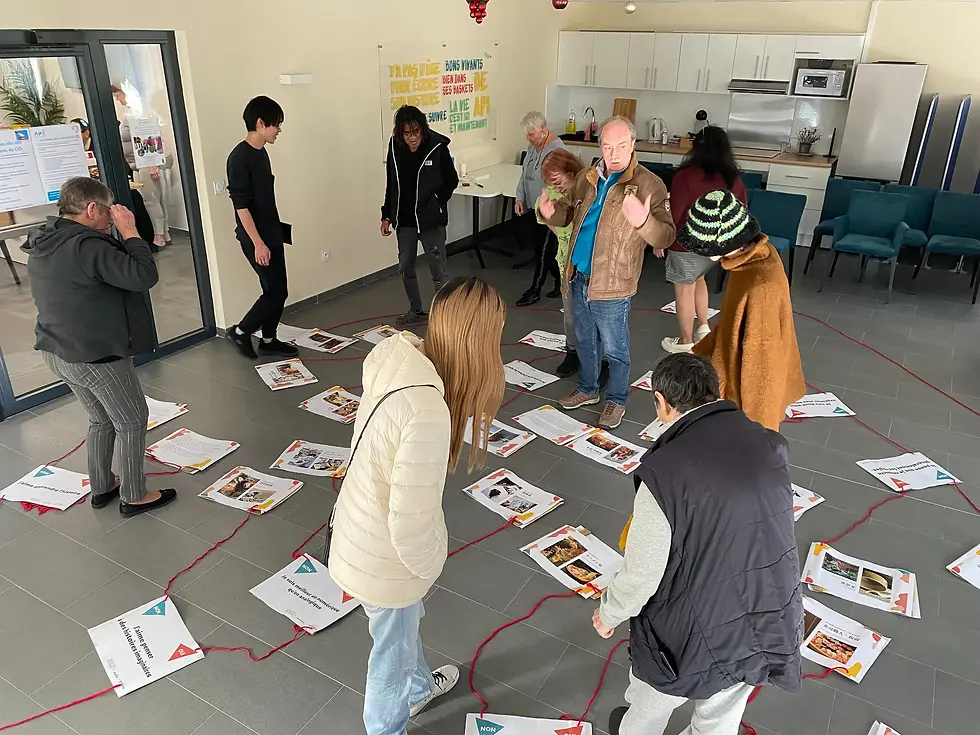
CASE STUDY
Waku-Doki
The future of
human connection


Challenge
Society is becoming increasingly shaped by automated, virtual interfaces and experiences, and technology offers ubiquitous ways for people to connect with each other, yet we are all longing for meaningful human interactions. Considering the contrast between vastly divergent generational uses, practices, and understanding of technology; and between hyperconnected urban lifestyles and remote rural areas, design aimed to encourage people to interact, improve the quality of connection between people and places, while fostering intergenerational solidarity.
Solution
Serving diverse generations, across multiple environments, urban and rural, students devised prospective scenarios that were all grounded in the values of shared memory, sensory experience, and visual stimulation. They designed complementary high tech and low fi solutions:
1. Hamon, an interactive, color- and light-rippling, energy-producing footpath concept to connect strangers in dense urban settings
2. Kaiso, a spinning memory panel hub installed in the main plaza of a village to celebrate collective reminiscence.
3. Hankyo, a giant photo album-like teleporting cabin, that bridges two different geographic spaces by chance encounters, via video/photo communications.
Impact
The project highlighted the value of practicing design research “on the ground” with real human interactions, engaging in intergenerational exchanges with isolated elderly living in retirement homes and social housing, meeting stakeholders who are directly concerned with issues of human connection, job mobility and access to culture - all of which provided a true empathic experience to students. Toyota and Accenture were exposed to qualitative design research using hyperlocal experiments and human experiences, and were given rich Japanese cultural references, to illustrate broad concepts that do matter to those global brands.

.webp)
.webp)

Best practices
Let designers be designers
Leverage drawing as a way to apprehend the world: a physical, emotional gesture, the act of sketching, doodling, drawing all the time, manga-ing, imagining with hands. Young designers dug deeper into their souls, to find inspiration in global roots and vernacular cultures, to propose new strategies of how to address the future of human connection in time of all-digital.
Boots on the ground
Learn by doing means learn by human connecting with real people, ideally unknown, super local, bridging intergenerational interests and motivations: passersby on the streets, elderly in distress in EHPADs, vulnerable population living in socio-medical residences, inhabitants in remote villages and busy citizens in larger cities, all provided a true empathic experience.
Find universal in vernacular
The team was largely inspired by their Japanese student members who brought their unique cultural flair to the form and style of the final deliverables – echoing the Toyota culture – as exemplified in the Makimono unfolding panel format, the project names, as well as in the Manga-like storyboards that served as design journeys.
To know more download the full case study
Team
Esteban GRONDIN, Tasei SHINODA, Lilou TAUBAN, Roxane COURIN, Mythili EMANI, Masato TANAKA, Rieru SUZUKI; Ines VAN HOENACKER Naim CHOUANA Wiktoria WOJCIK; Maria-Teresa PEROTTI Lilou MOUILLERON Ilia SABATIER Ihara NAPIDO
Coach
Laetitia WOLFF
Partners
A partnership project developed at Besign, the Sustainable Design School in partnership with Toyota and Accenture

